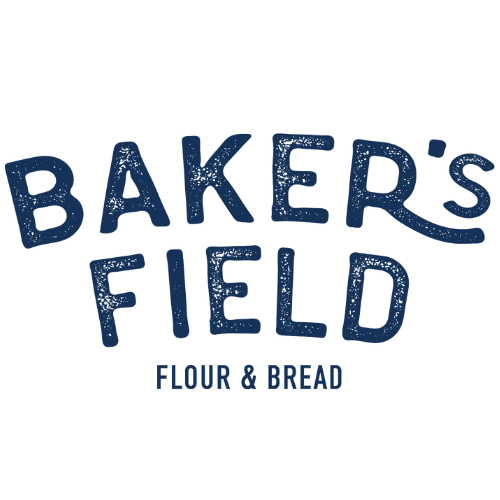When I first talked to owner/head baker Steve about working at Baker’s Field, he said, “Okay, I can tell you love baking and that you have experience, but what about milling? Does that excite you?” Because I was in interview mode, I responded with an enthusiastic YES to this question. But in reality, I wasn’t exactly sure what was so exciting about milling flour.
Baker Nate loves milling because the mill itself, as a piece of equipment, is a product of fine craftsmanship and poses “fun” problems that sometimes need repairing or adjusting. Nate is correct that our mill is a thing of beauty: built by professional baker Andrew Heyn of New American Stone Mills in Vermont, our mill boasts artistry and practicality. It is typically pretty simple to use, yet the work that went into creating the mill is intricate, thoughtful, and skillful.
Beyond the beauty of the machine itself, in my two years of working at Baker’s Field, I’ve come to fully understand why freshly milled flour is so exciting, and why we opted to add this extra step of baking. It’s simple: fresh, stone-milled flour from local, organically grown grain tastes like nothing you’ve eaten before. From Bolles to Ingmar to Prosper to Forefront, each grain has its own flavor profile. The taste and textures of the bread made with this flour are complex and nuanced. Tasting notes often include the words nutty, grassy, earthy.
How the mill works:
The grain flows from the hopper on to the granite stone, creating even particles of all three components in the grain -- endosperm, germ, and bran. The whole grain flour shoots out of the front of the mill. Our high extraction flour, which is also called sifted flour, bread flour, or simply “white” flour, goes through our sifter, but still maintains elements of the germ and bran. This makes both our whole grain and bread flour rich in fiber, and therefore much more digestible, nutritious, and flavorful.
As an eater, I’m hooked by the complexities and depth of the flavor of the grain. As a baker, I’m challenged and fueled by the demands of freshly milled flour. Fresh flour is different than industrial flour. It absorbs more water and requires less mixing. We have to work harder to get volume in our baked loaves. We are constantly adjusting to grain that creates different types of dough. This is part of the fun of working with local, non-industrial grain.
- Baker Hannah

